Apple MacBook Air (2019)
The MacBook Air (2019) clearly isn’t going to let a few blustery years slow it down. With the now defunct 12-inch MacBook out of the picture, the MacBook Air is now out of its shadow and back as the Cupertino company’s slimmest and lightest Macbook.
Of course, it’s not only reclaimed its throne. The MacBook Air (2019) is back with a vengeance with better features, more powerful specs under the hood and an even better build quality, which the new 2020 MacBook Air has also adopted. What’s more, it’s now touting a lower price tag, making it more affordable and a much better value than its predecessor.
But, does that make the MacBook Air (2019) a good enough investment for a new audience already discouraged by the MacBook Pro line’s lofty price? Next to rival laptops in the same price range, its new specs still look underpowered on paper. So tested it ourselves to find out.
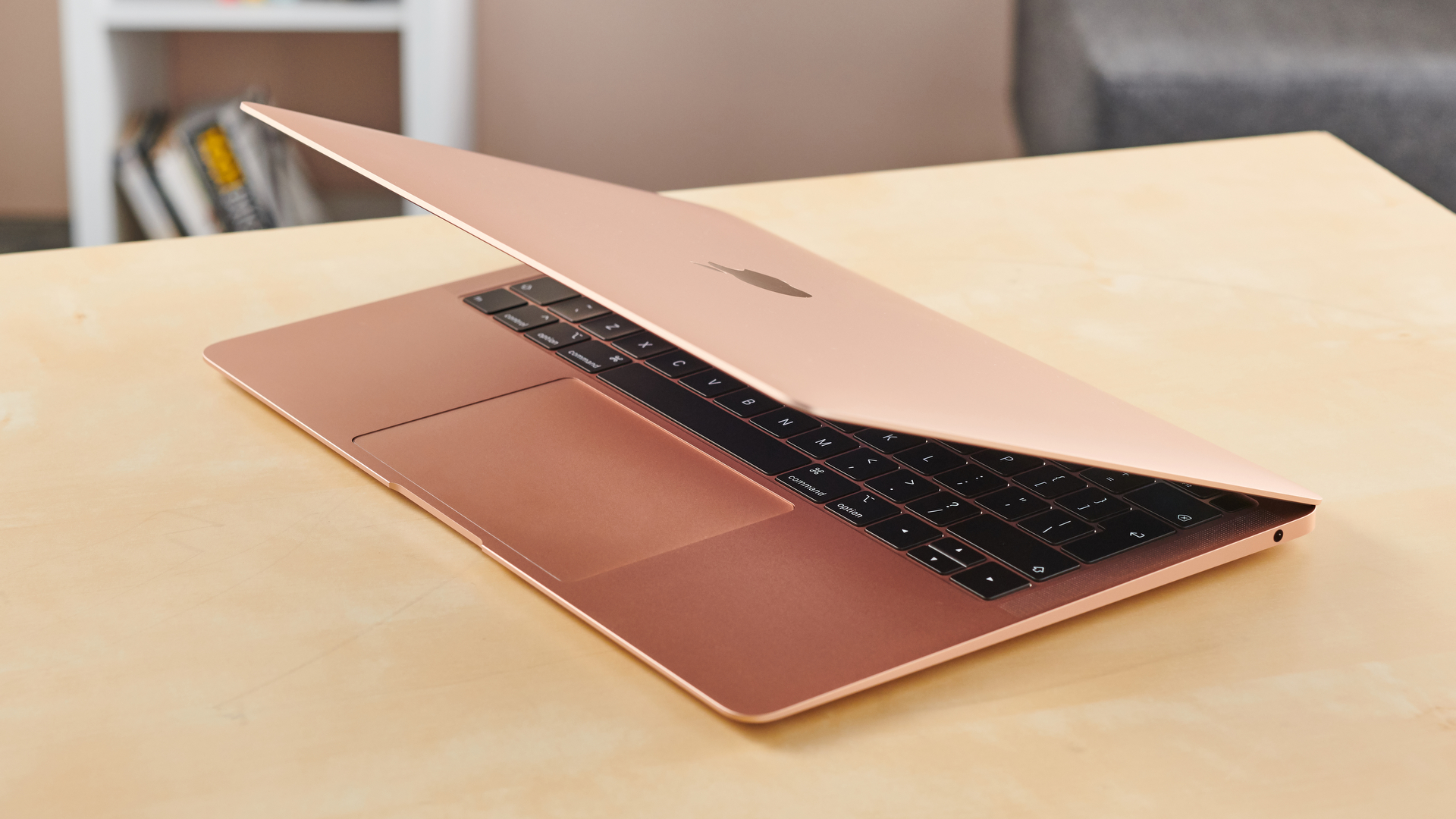
Spec sheet
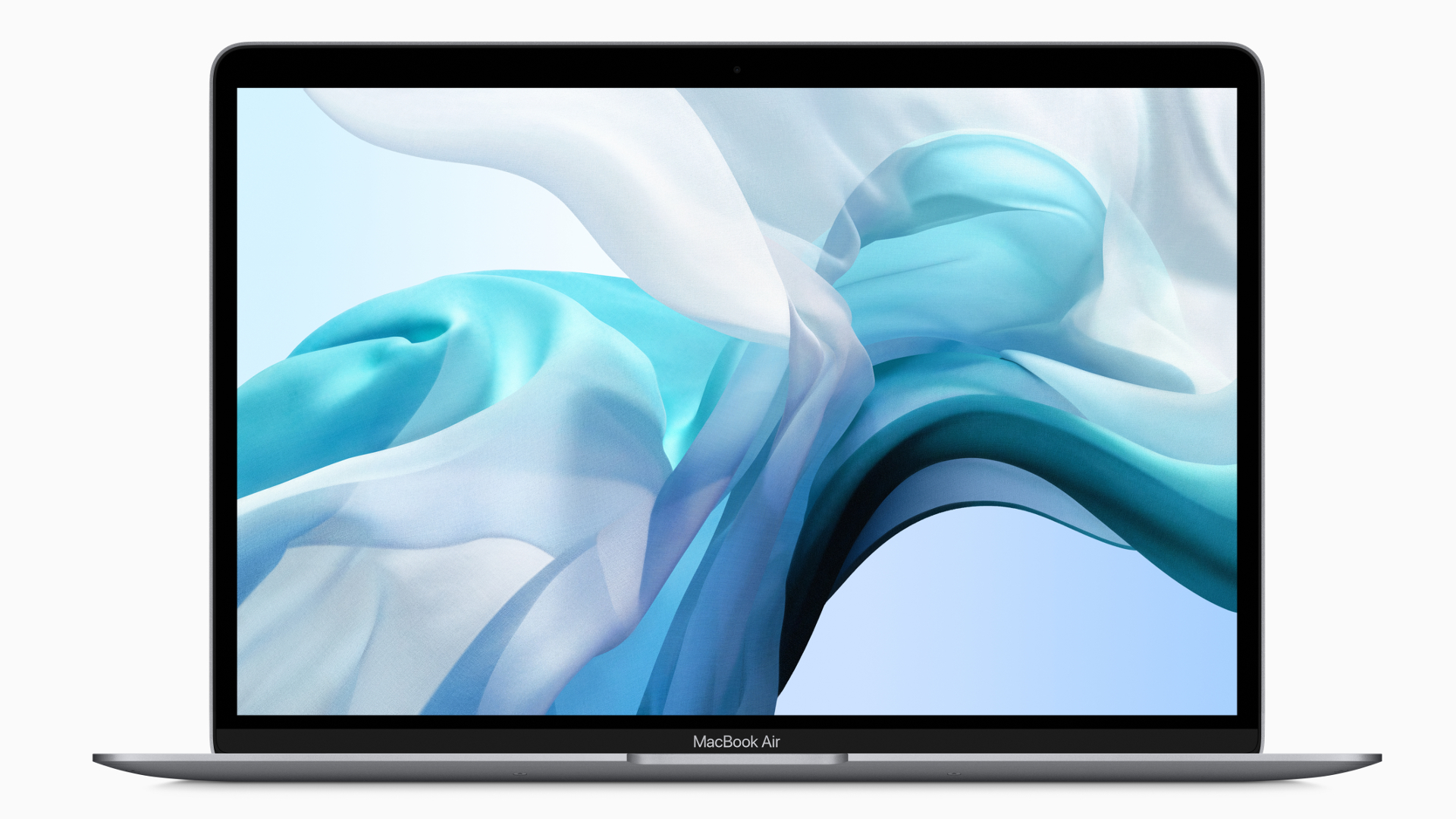
Here is the MacBook Air (2019) configuration sent to TechRadar for review:
CPU: 1.6GHz Intel Core i5-8210Y (dual-core, 4 threads, 4MB cache, up to 3.6GHz)
Graphics: Intel UHD Graphics 617
RAM: 8GB (2,133MHz LPDDR3)
Screen: 13.3-inch, 2,560 x 1,600 Retina True Tone display (backlit LED, IPS)
Storage: 256GB PCIe SSD
Ports: 2x Thunderbolt 3 (USB-C), 3.5mm headphone jack
Connectivity: 802.11ac Wi-F, Bluetooth 4.2
Camera: 720p FaceTime HD webcam
Weight: 2.75 pounds (1.25kg)
Size: 11.97 x 8.36 x 0.61 inches (30.41 x 21.24 x 1.56cm; W x D x H)
Price and availability
When Apple first announced the new MacBook Air (2019), it was great news for many reasons. First of all, we weren’t really anticipating a refresh. And second of all, the entry-level MacBook Air (2019) not only got a refresh, but it also received a price drop – it’s now down to $1,099 (£1,099, AU$1,699).
That’s hardly budget territory, but this move does make the MacBook Air more affordably priced than ever before, and seeing prices go down with updates – rather than up – is always a lovely welcome. For comparison’s sake, the MacBook Air (2018) started at $1,199 (£1,199, AU$1,849) when it hit the streets.
The base configuration of the MacBook Air (2019) gives you a 1.6GHz dual-core 8th-generation Intel Core i5 processor with Turbo Boost up to 3.6GHz, 8GB of LPDDR3 RAM, 128GB storage and Intel UHD Graphics 617.
You can also purchase a configuration with similar specs, but double the storage at 256GB, which will cost you $1,299 (£1,299, AU$1,999).
That essentially means you’re paying $200/£200/AU$300 more for a 128GB storage increase, which is a pretty pricey upgrade. It’s a bit frustrating that Apple has kept that large jump in price for a fairly small amount of extra storage space. Meanwhile, you can double your iPhone XR storage for just another $50/£50.
It makes much more financial sense to get the 128GB version, and then either buy an external hard drive (check out our piece on the best external hard drives for Macs for options) separately, or use cloud storage like iCloud to save your files.
As is unfortunately typical with Apple’s hardware, there’s no simple way to open up the MacBook Air and upgrade the SSD yourself.
Consequently, while we’re glad to see the price drop for the MacBook Air, shipping a premium – and while the Air is the most affordable MacBook, at this price it’s still premium – laptop with just 128GB of storage seems pretty stingy in 2019 – especially since Apple charges so much more for a slight upgrade in storage space.
One of the main threats to the MacBook Air (2019) is that Windows laptops are now even slimmer and more powerful than ever. Apple no longer has the monopoly on thin and light laptops, as there are a number of Windows-based Ultrabooks that come with similar (or even better) specifications for the same price. And, you can be sure that they all have bigger hard drives than just 128GB. For example, the HP Spectre x360 (2019) is around the same price, but with 256GB storage and an even much faster processor.
The lower entry price of the MacBook Air (2019) is positively welcome, that is if you’re set on owning a MacBook. However, due to some of Apple’s not so pleasing habits are still obvious, and because of increased competition from Windows laptops, there are better value options worth considering.
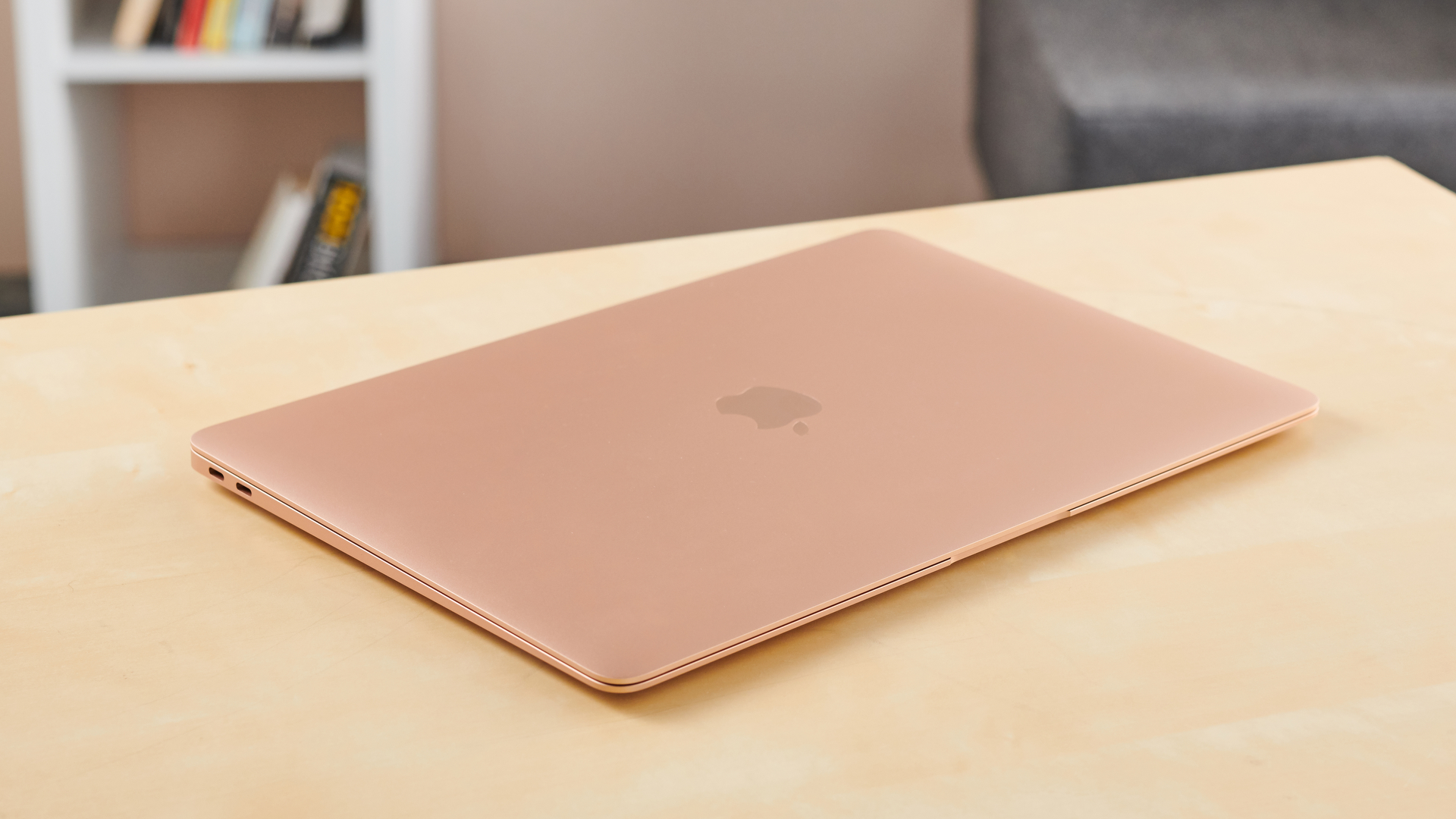
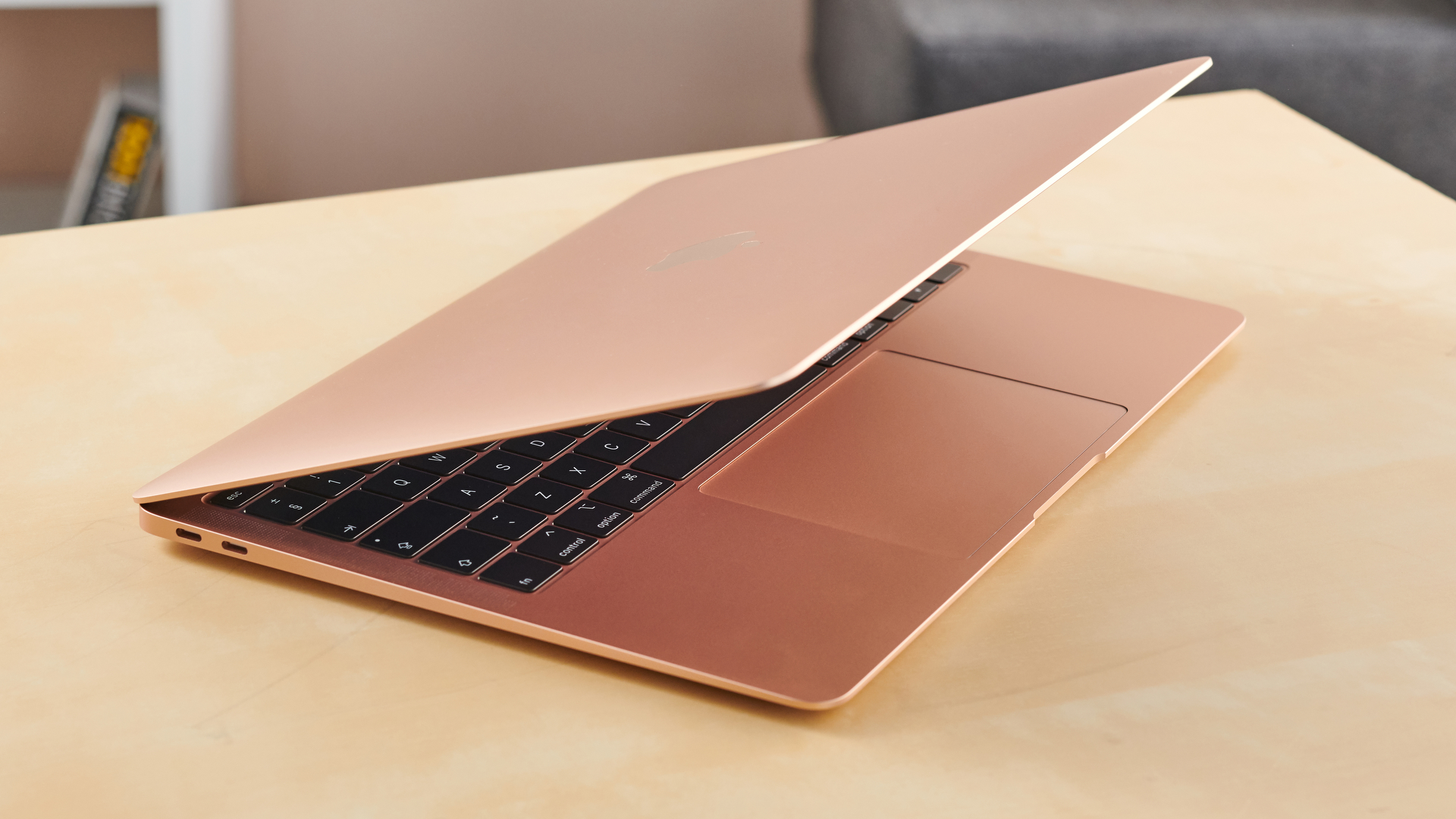

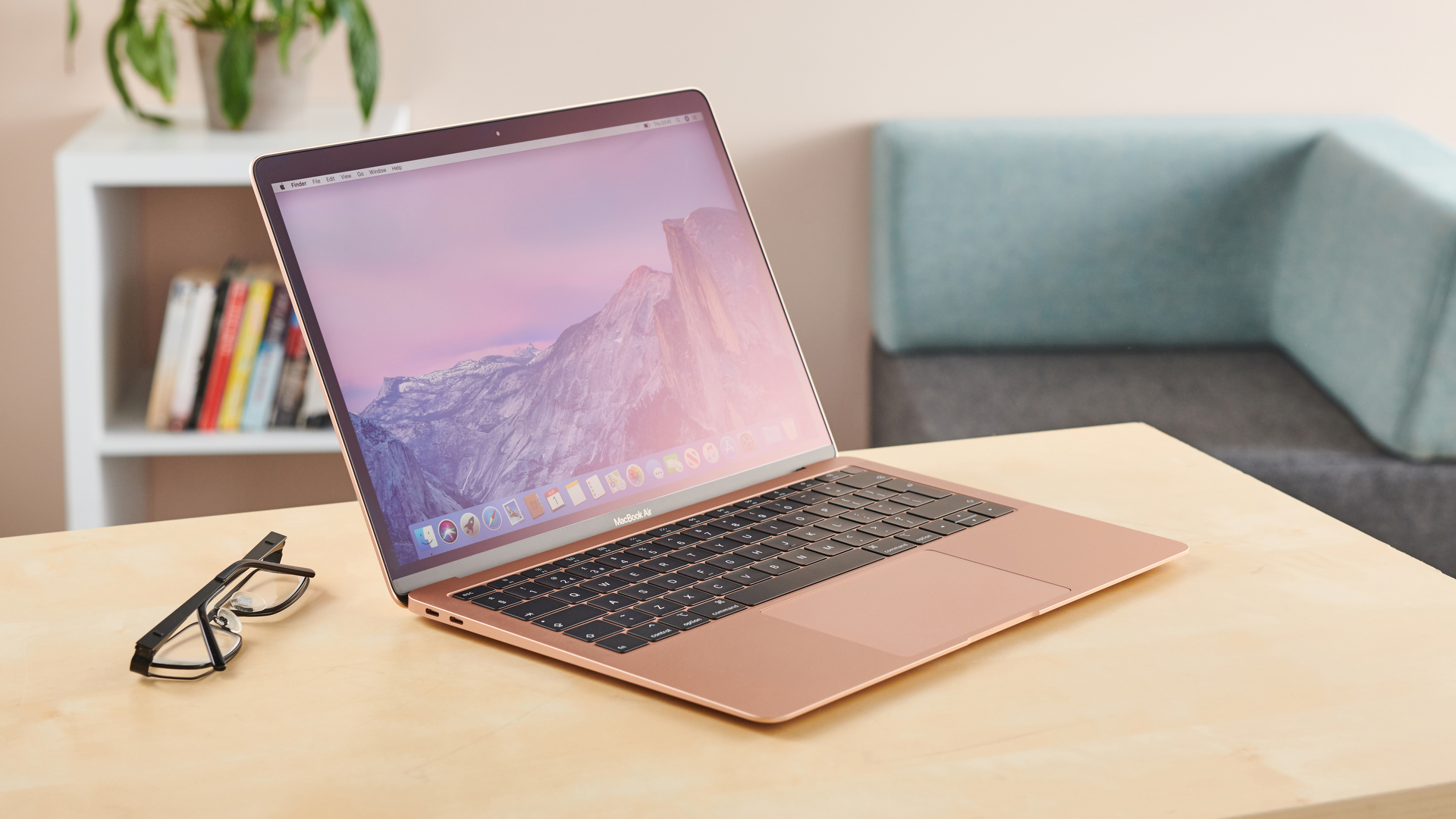
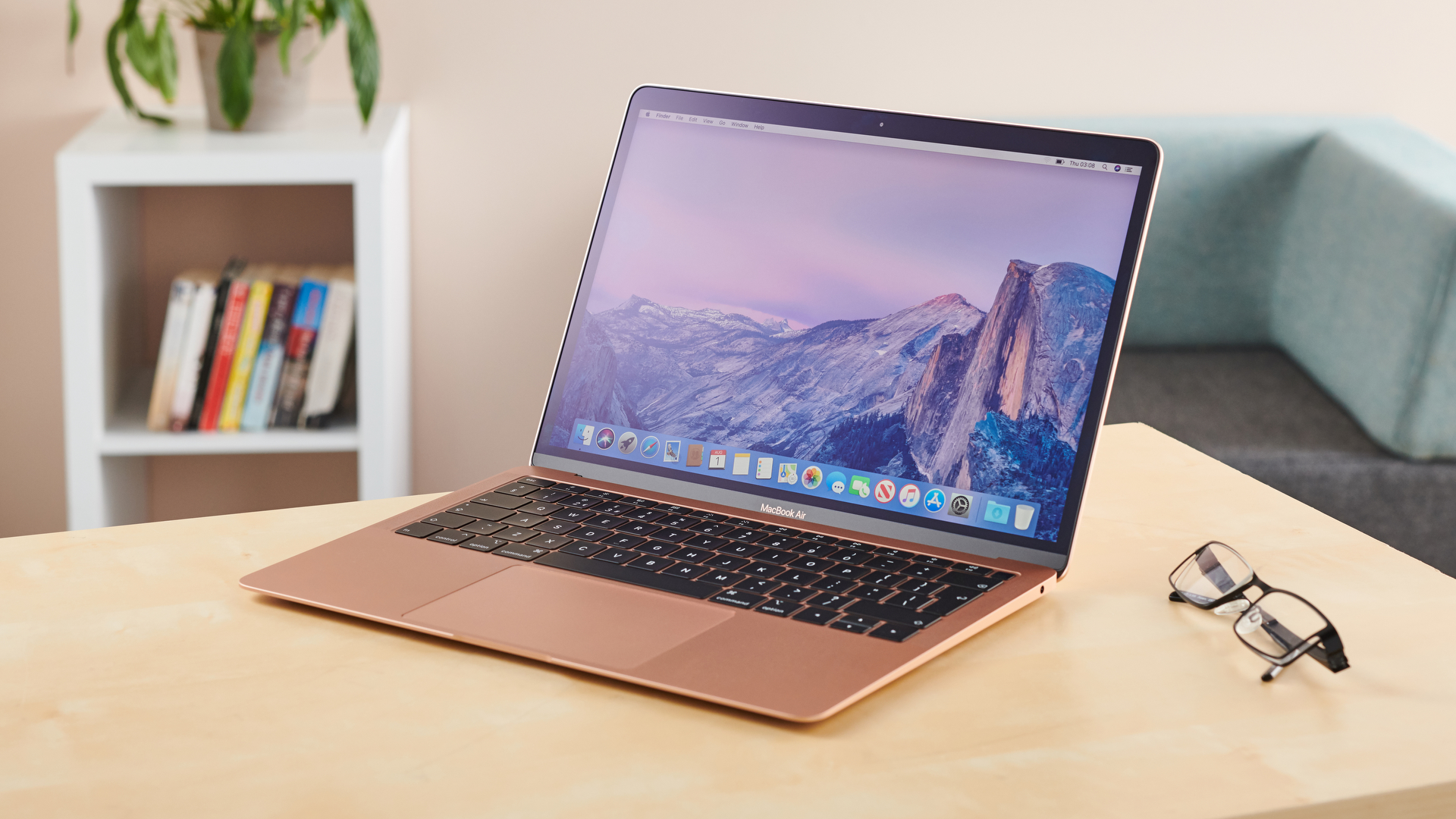
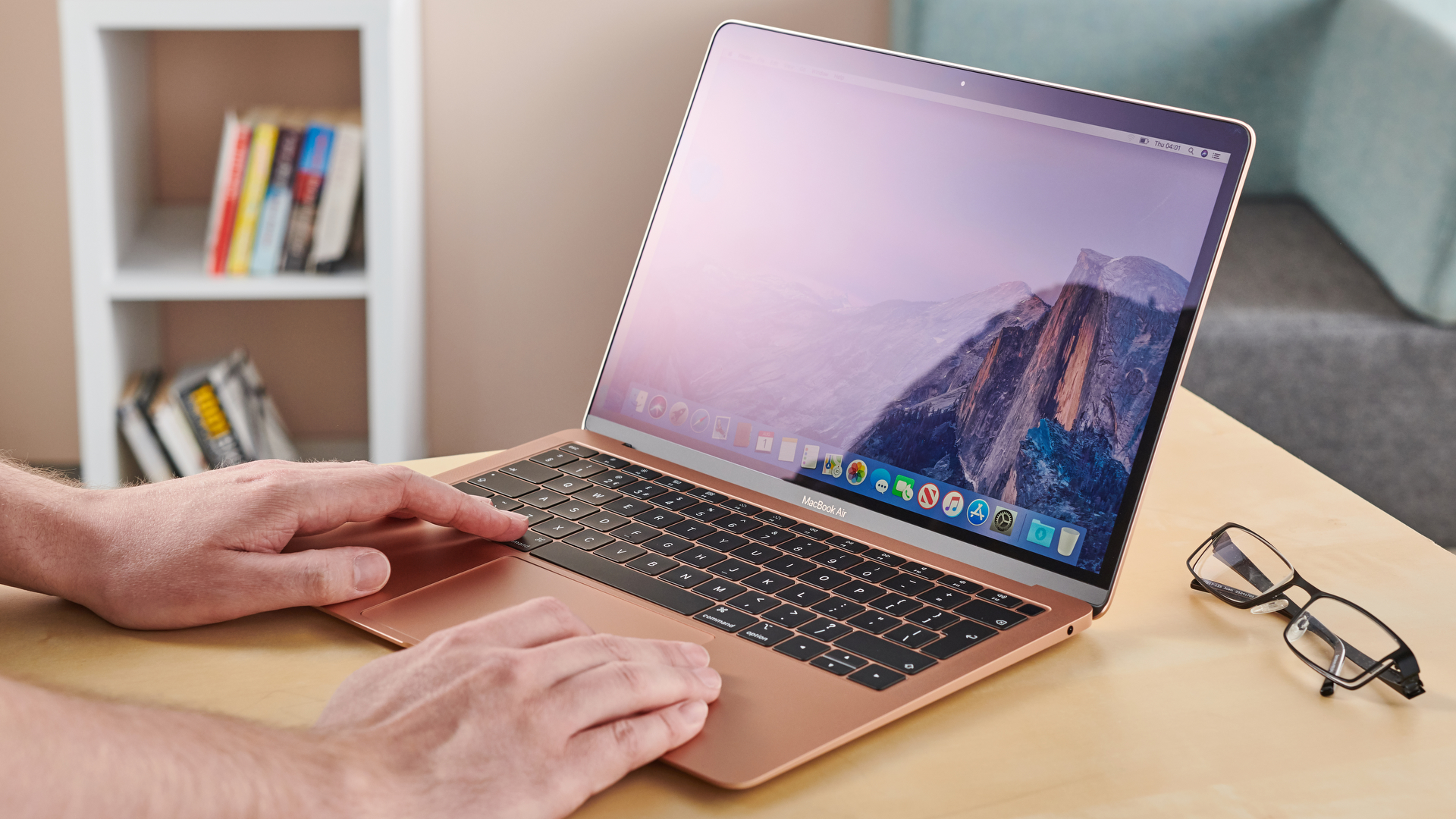
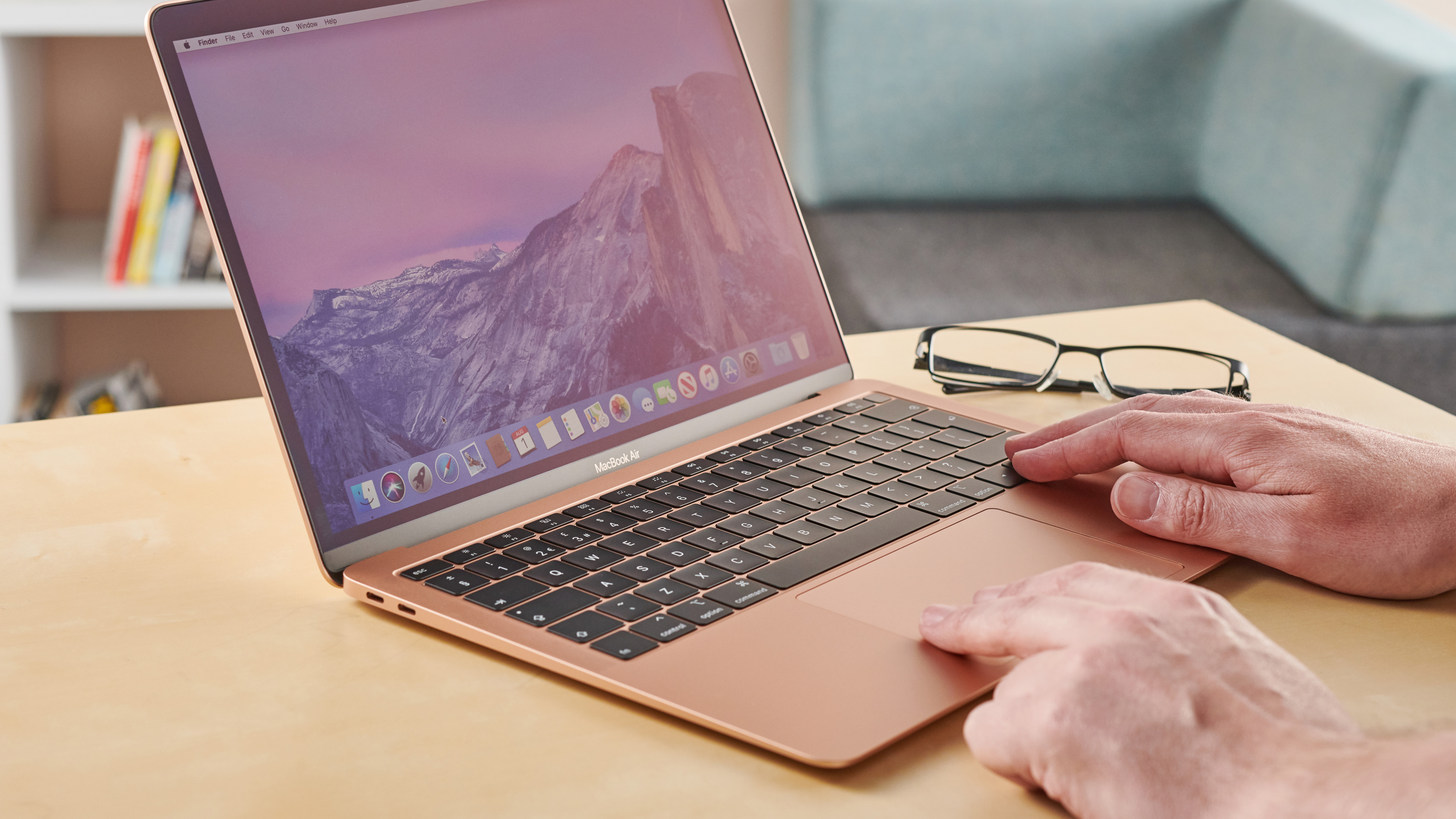
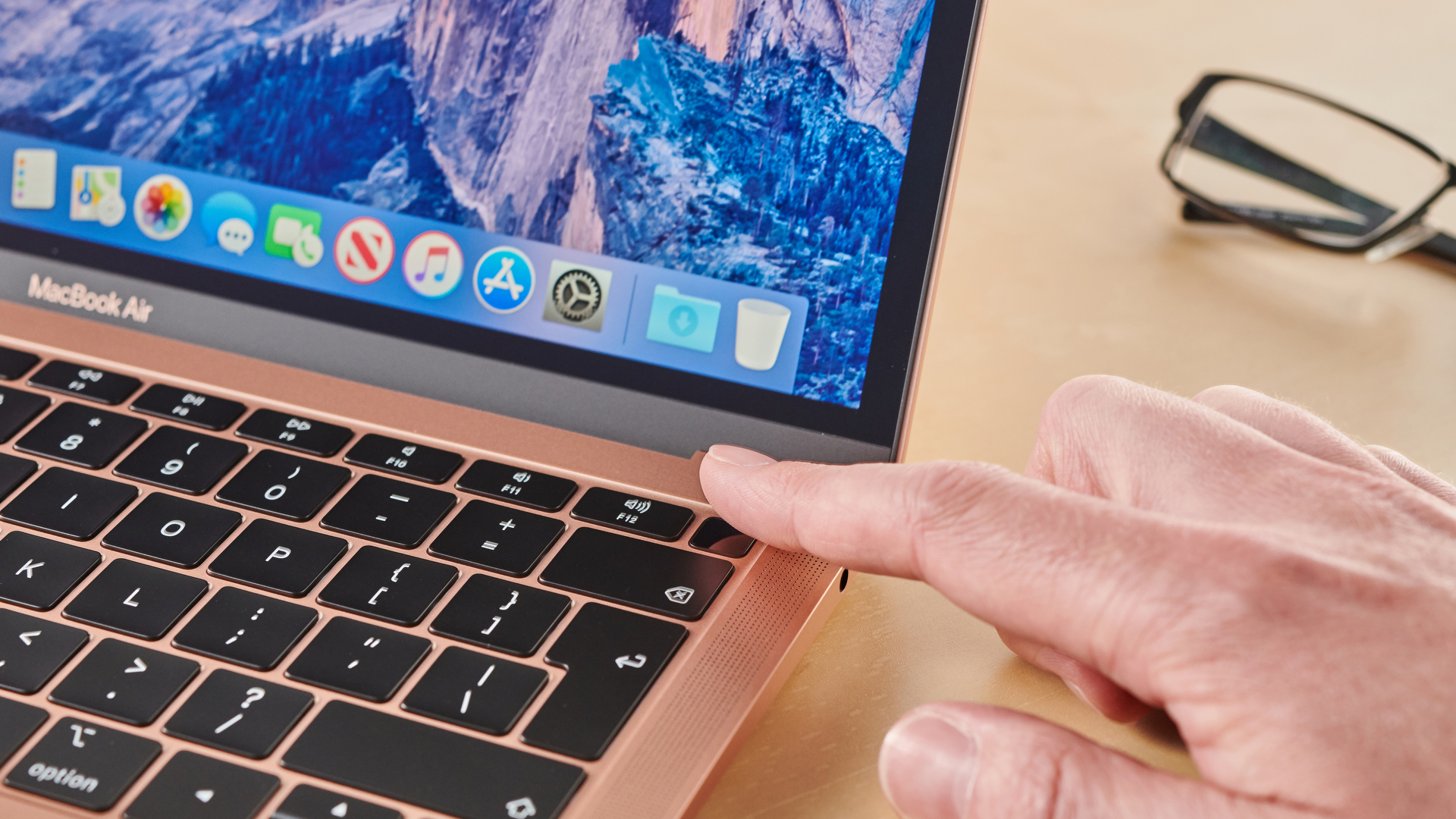
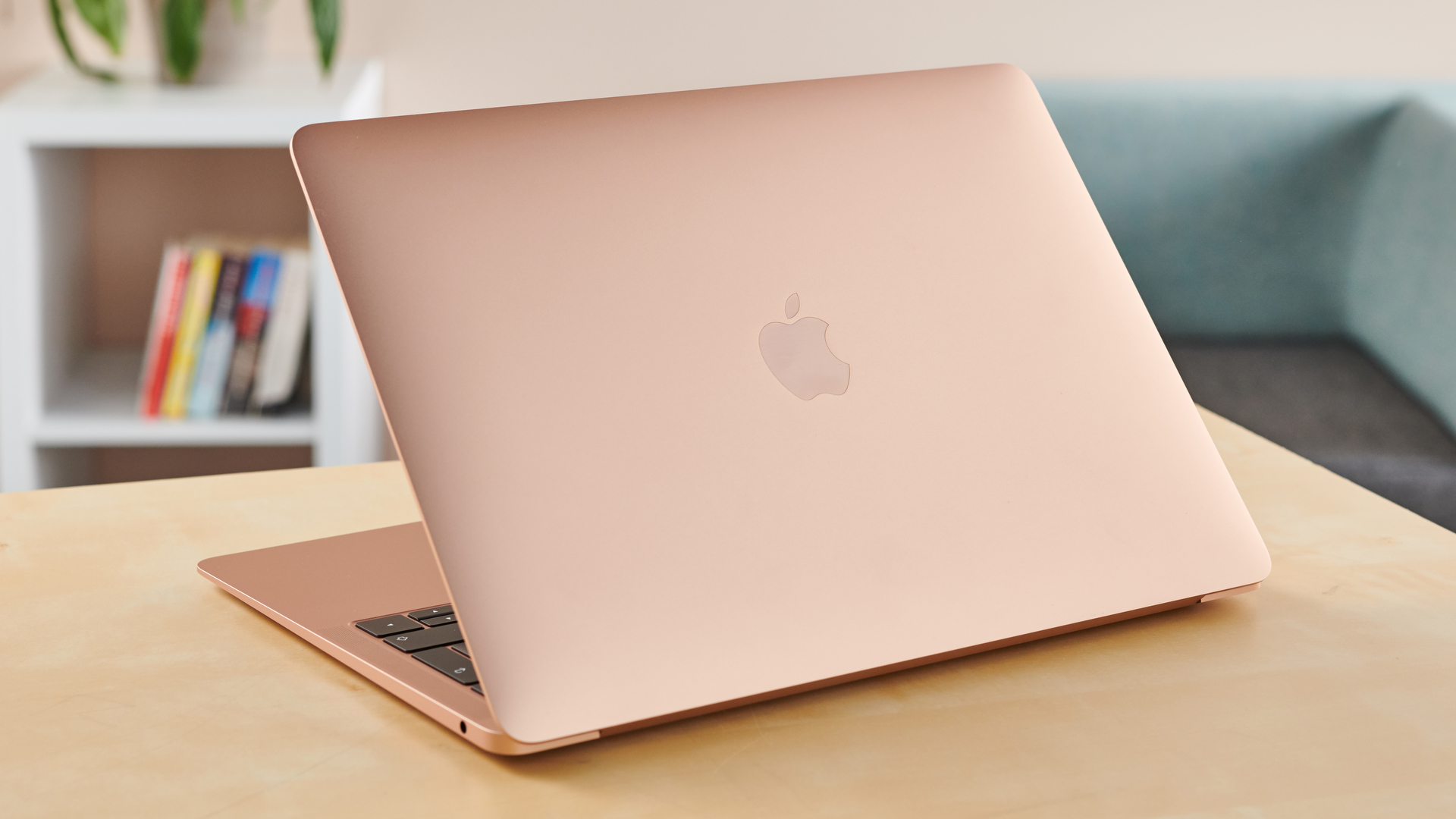
Design
Just like with the new MacBook Pro (2019), Apple didn’t change the external design of the MacBook Air (2019) from its predecessor.
This is good news if you’re already a fan of the design of the MacBook Air. However, it’s not so if you want a more substantial update.
This also means that you end up with the same slim laptop with dimensions of 11.97 x 8.36 x 0.61 inches (30.41 x 21.24 x 1.56cm) and a weight of 2.75 pounds (1.25kg). It remains incredibly lightweight, and though it’s not as mind-blowingly light as rivals like the Acer Swift 7, the Apple MacBook Air (2019) is a laptop you can easily lug around in a bag or backpack.
Despite being thin and light, it also manages to feel solid and durable, so you don’t have to fuss over it and be worried about bends and dents. This is thanks to the MacBook Air being made out of an aluminum alloy that looks great and feels robust. By keeping the same design as last year’s model, the new MacBook Air (2019) is once again crafted out of 100% recycled aluminum, which means that no new metal has been mined to build this device. That’s an excellent selling point for anyone who is concerned about the environment, and something we applaud Apple for.
Still, by staying with the same design, it means this year’s model has the same features as the 2018 model, which fall short of our expectations.

The fact that the MacBook Air is only equipped with two Thunderbolt 3 ports is disappointing though understandable, considering the slim design of the laptop. However, Apple’s choice to place both ports on the left-hand side puzzled and frustrated us – and it continues to do so in the 2019 model.
If one port had been put on each side, it would have allowed people a bit more versatility when charging the MacBook Air. Instead, you always need to sit in a particular position with the power adapter plugged into the left of the laptop.
It also makes the MacBook Air feel a little cluttered – and slightly uneven – if you plug in two (or more if you have an adapter) devices into the Thunderbolt 3 ports.
One area where Apple has made a change – and a welcome one at that – is in regards to the keyboard. The new MacBook Air (2019) now uses the refined third-generation Butterfly keyboard that came with this year’s MacBook Pros.
Earlier versions of the MacBook keyboards using older Butterfly switches were vulnerable to issues such as sticky and unresponsive keys. Apple has gotten a lot of flack for this – not surprisingly, as when you’re dropping a lot of money on a laptop, you’d expect the keyboard to last you a long time without falling apart.
The controversy has been a stain on Apple’s otherwise sterling reputation for quality control and reliability. The updated keyboard is aimed at making it less likely to have issues – however, some people will unsurprisingly think that this doesn’t go far enough. When spending this kind of cash, ‘less likely to go wrong’ just isn’t good enough.
While Apple’s Keyboard Service Program, which will replace a faulty keyboard free of charge, extends to this year’s MacBook Air, it also suggests that the problem might still be prevalent. At this point, we hope that the next MacBook Air (and other MacBook models) ditch the clearly troubled Butterfly switch altogether.

As with the previous model, Touch ID is also present, allowing you to log into the MacBook Air with your fingerprint or pay for stuff using Apple Pay. The bigger Force Touch trackpad is also there, and as with last year’s model, it feels comfortable to use and works extremely well.
Generally, the MacBook Air (2019)’s design hasn’t changed all that much. In some ways, it’s a good thing – but it’s also disappointing as well. Hopefully, the next version of the MacBook Air will try something as ground-breaking as the original MacBook Air.

True Tone screen
Possibly the most notable change in the MacBook Air (2019) is the screen, which now touts Apple’s True Tone technology.
The True Tone feature automatically fine-tunes the color temperature – usually whites – shown on the display, depending on the ambient light you’re MacBook Air is in. It can have a pleasing effect, particularly on your eyes – when you first start the MacBook Air (2019), you can toggle the setting on and off to experience the difference. And, while this setting may not be for everyone, we have found it does quite an effective job of making colors look more natural.
True Tone has been included in MacBook Pros for some time now, and we’ve often thought that it wasn’t for everyone. MacBook Pros are often used by photographers, video editors and digital creatives who need accurate colors – something that True Tone messes with. However, with the MacBook Air, which is aimed at more casual laptop users who aren’t as concerned about color accuracy, using this feature makes much more sense.
It’s a nice addition, but probably not one that will convince you to want to swap your 2018 model for this year’s.
Elsewhere, the screen is the same – a 13.3-inch Retina display with 2,560 x 1,600 resolution that delivers detailed and vibrant colors. Last year’s model introduced remarkably thin bezels around the display, making the screen span almost the entire width of the MacBook Air. The display has long been one of the MacBook Air’s best qualities, so we’re pleased that – True Tone aside – Apple stuck with that winning formula.
Benchmarks
Here’s how the MacBook Air (2019) performed in our suite of benchmark tests:
Cinebench CPU: 277 points; Graphics: 35 fps
Geekbench 4 Single-Core: 4,303; Multi-Core: 7,927
TechRadar Battery Life Test: 10 hours
Because the MacBook Air 2019 is equipped with the exact same specifications as the 2018 model, you can see that there won’t be a significant uptick in performance.
That’s a little disappointing – especially since the MacBook Air (2019) is fitted the same dual-core 1.6GHz, Intel Core i5-8210Y, which can Turbo Boost up to 3.6GHz. As with last year’s model, this – backed by 8GB of RAM – is suitable enough for day-to-day tasks, and macOS (Apple’s operating system) runs nice and smooth.
However, in 2019, a dual-core processor in such an expensive machine leaves the MacBook Air feeling underpowered and overpriced – and the new price cut doesn’t do that much to fix that.
In addition, not long after Apple launched the MacBook Air (2019), Intel unveiled its Ice Lake processors, which deliver performance improvements – and quad-core offerings for the first time in Intel’s Y-Series of processors, which are fanless CPUs created for thin laptops like the MacBook Air.

We can’t help but wonder, if Apple had held off on rolling out the MacBook Air (2019) until later in the year, we may have gotten one configuration with a new quad-core CPU, giving the laptop a huge performance bump and making it a much more exciting upgrade.
However, we may have to wait until next year to see that.
In other words, the MacBook Air (2019)’s performance is adequate, but a little uninspiring compared to the increasingly more powerful competition. A dual-core processor, limit of 16GB of RAM (if you pay to upgrade) and a small SSD leaves the MacBook Air (2019) feeling a little wanting in the performance stakes.

Battery life
One place that the MacBook Air (2019) particularly shines in – and easily beats many Windows 10 rivals at this price point – is battery life, with this year’s model lasting spot on 10 hours in our battery life tests.
This involves running a looped 1080p video with the screen set to 50% brightness. Reaching 10 hours is a great achievement, and depending on how you use the MacBook Air (2019), you might easily squeeze more than a whole work day’s use out of it without charging. This makes it an ideal choice for students who require a laptop with a battery that can last over several lectures.
The low powered internals are mainly to thank here, along with Apple’s more energy-efficient software. If battery life is of the highest importance, you may find that it’s worth compromising on performance.
The MacBook Air (2019) also does a good job of holding its charge when it’s placed into sleep mode (where you just close the lid of the MacBook Air, instead of fully shutting down macOS.) Apple claims up to 30 days of standby time, and while we didn’t have time to verify that, we were once again blown away by how well the MacBook Air (2019) holds onto its battery when not in use.
Many Windows laptops, in our experience, keep draining battery even while in sleep mode. That’s often ended in us picking up a laptop after a day or so without use, only to find the battery completely drained. That didn’t happen with the MacBook Air (2019).
Battery life is the one place – outside of design – where the MacBook Air (2019) really shines.

Final verdict
Apple’s refresh of the MacBook Air (2019) is a bit puzzling. It hasn’t been that long since the release of the MacBook Air (2018), and this new model only adds a few new enhancements. While True Tone is a nice feature to have, it’s far from critical – though Apple’s continued improvement of the keyboard’s reliability is definitely welcome.
The thing we like most about the MacBook Air (2019) is the new price. This makes it cheaper than ever to get a MacBook. However, despite the price cut, this is still a very pricey laptop, and the low powered components pale in comparison with modern Windows 10 laptops at the same price. With Apple continuing to add new features to macOS, you might find the MacBook Air (2019) start to feel a bit slow and outdated far too soon.
The timing of this release also means the MacBook Air (2019) doesn’t take advantage of Intel’s new Ice Lake processors, some of which seem ideal for a thin and light laptop such as the MacBook Air. This leads us to think that next year will see a more substantial update. So unless you’re pining for the latest version, we’d recommend waiting until 2020 – or seeing if prices start to drop for the 2018 model.
0 comments:
Post a Comment